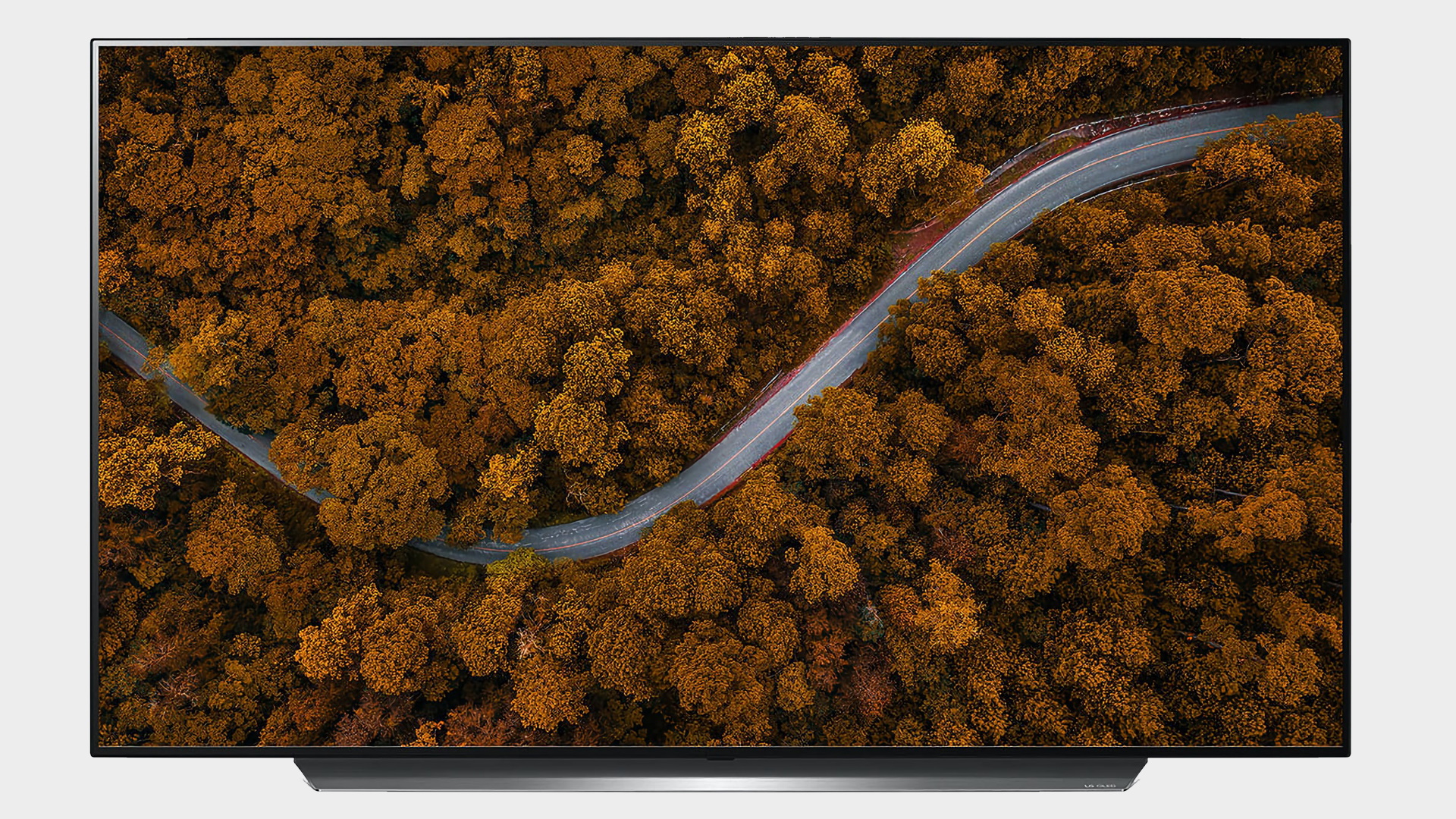Our Verdict
LG’s smallest OLED is uniquely feature-heavy and offers blistering framerates. For PC gamers looking for a 4K TV, this is the best choice.
For
- Unrivalled blacks
- Offers up 4K@120Hz
- A (semi) desk-friendly form factor
Against
- Expensive for a sub 50-inch TV
- Risk of screen burn-in
- No full-range colour gamut at 4K yet
PC Gamer's got your back
LG’s OLED48CX is a game-changer. Not only is this the first sub 50-inch OLED television, it’s also the first TV that LG has made that supports the 4K resolution at 120Hz. This makes this 48-incher a mouth-wateringly viable option for PC gamers looking to replace a traditional IPS or TN panel. Meet the new gold standard when it comes to a 4K gaming TV that can also act as one of the best gaming monitors around.
Panel size: 48-inch
Panel type: OLED
Native resolution: 3,840 x 2,860
Brightness: 685 cd/m² (in HDR)
Response: 1.7ms
Colour space: 97.32 % of DCI-P3
HDR support: HDR10 Pro
Inputs: 4x HDMI 2.1
Other: Nvidia G-SYNC Compatible, AMD FreeSync Premium, Instant Game Response
That freshly shrunken form factor is a big deal. Previously, the smallest OLED TV you could buy was 55-inches. While a 48-inch screen is hardly bite-sized, it’s the first OLED that can (just about) fit on a reasonably sized PC desk. When you consider Nvidia has been trying to pimp its Big Format Gaming Displays, which measure up to 65-inches and balloon far beyond the $1,499/£1,499 price tag for this, the OLED48CX no longer looks like such a colossal (or wallet-ruining) prospect. Plus with an LG promo code, you may not even have to pay full price anyway.
If you’re not familiar with OLED as a display format, here are the CliffsNotes: The acronym stands for ‘organic light-emitting diode’, and it’s generally considered the best type of television panel. Unlike a traditional LCD TV or one of Samsung’s trademark QLED displays, a 4K OLED can turn off every single one of its 8.3 million pixels.
What does that mean in real-world terms? OLED offers the sort of effortlessly inky blacks no other type of TV panel—or PC monitor tech—can match. When it comes to contrast performance or playing games in a dark room, OLED is the undisputed king.
Screen uniformity is also far better than your average TV; a factor that should be of huge importance to gamers. Pan the camera across a clear blue sky in an open world like GTA 5 on a LCD TV or traditional PC monitor, and you’re likely to see uneven vertical streaks/screen artefacts, known as “Dirty Screen Effect”. OLED doesn’t suffer from this issue, leading to images that look far more uniform when moving against an in-game sky or playing a constantly up-and-down game of FIFA 20.

Even if you don’t have the sort of obsessive eyes than can pick up on the details above, the more mainstream upgrades the CX offers over last year’s LG C9 should be significant to hardcore PC players. Not only does it continue to support Nvidia G-Sync—providing you have a suitable GPU—but thanks to a post-release firmware update, it’s also compatible with AMD’s Freesync Premium.
LG has doubled the refresh rate at 4K resolutions compared to previous models, too. While last year’s Series 9 line-up could ‘only’ support 4K at 60Hz at launch (although firmware patches have increased this to 120Hz), the CX is capable of displaying pictures at 4K at 120Hz right out of the box. If you’re the sort of obsessive gamer with a Nvidia RTX 2080 Ti stuffed inside your rig, the doubling of that refresh rate at Ultra HD is huge. At this insane resolution/framerate combot, input lag measures in at just 11.6ms. In the TV space, that’s more or less unrivalled.
To get the most out of the OLED48CX, there’s no denying you need a monstrous PC. If you want to run any recent game at 4K, at a framerate significantly north of 60fps, an Nvidia GeForce 2080 Ti, a top-end Intel or AMD CPU, and at least 16GB of DDR4 RAM are required.
For this review, I tested LG’s CX on a PC with said GPU, an Intel 8700k CPU, with 32GB of DDR4 Corsair memory. The most headline-worthy, recent result? I could happily play Hideo Kojima’s polarising Death Stranding in 4K at the highest settings, with framerates fluctuating around 80-100fps. Introduce the CX’s G-Sync features into the equation, and I never once encountered any stutter in the post-apocalyptic postman sim.

You’ll need to overcome several slightly annoying obstacles if you’re planning to replace your current monitor with the OLED48CX, though. While you obviously need a hefty desk, there are inherent issues unqiue to OLED as a format you should consider before taking the plunge.
For one thing, OLEDs are far more reflective than either your average IPS monitor or LCD TV. If you frequently do work or play games in a well-lit room where you can’t easily block light through curtains or blinds, OLED as a display format may not be for you.
Burn-in also continues to be a factor (albeit an easily avoidable one) when it comes to OLEDs. These TVs are vulnerable to permanent image retention if you display the same picture onscreen for long periods of time. The general rule of thumb? If your set shows the same image for two hours or more, your set could be vulnerable to burn-in. Still, if you set a screensaver to kick in whenever you’re away from your PC, you shouldn’t have any problems.

There are also slight issues when it comes to desktop resizing. By default the LG OLED48CX doesn't entirely plays nice with Windows 10. Even at the default 3,840 x 2,160 resolution, the edges of the screen are very slightly cut off, and this is down to LG's Screen Shift technology that helps prevent burn in. To fix this, you can either set a custom resolution of 3,802 x 2,136 to squeeze in every onscreen pixel, or you can turn off Screen Shift in the TV's Picture Settings menu.
HDR color problems also cause a slight headache right now. We're waiting for HDMI 2.1 to land on our graphics cards, but in the meantime we're left with not being to support the full RGB color gamut at 4K, meaning you have to settle for YCbCr limited at 2160p. This isn’t an issue at 1440p though, so for the best balance between color reproduction, I suggest running your desktop at 2,560 x 1,400. Don’t worry, individual games still run at 4K/60fps HDR, providing they support high dynamic resolution.
The bottom line with the LG OLED48CX? This is the first OLED that can be considered genuinely suitable for a desk. Couple that PC-friendly form factor with the CX’s 4K@120Hz support, and this suddenly becomes the sort of luxurious big screen gaming monitor Nvidia’s Big Format Displays should be having sweaty night terrors over.
Updated August 11, 2020, for technical accuracy.
LG’s smallest OLED is uniquely feature-heavy and offers blistering framerates. For PC gamers looking for a 4K TV, this is the best choice.


